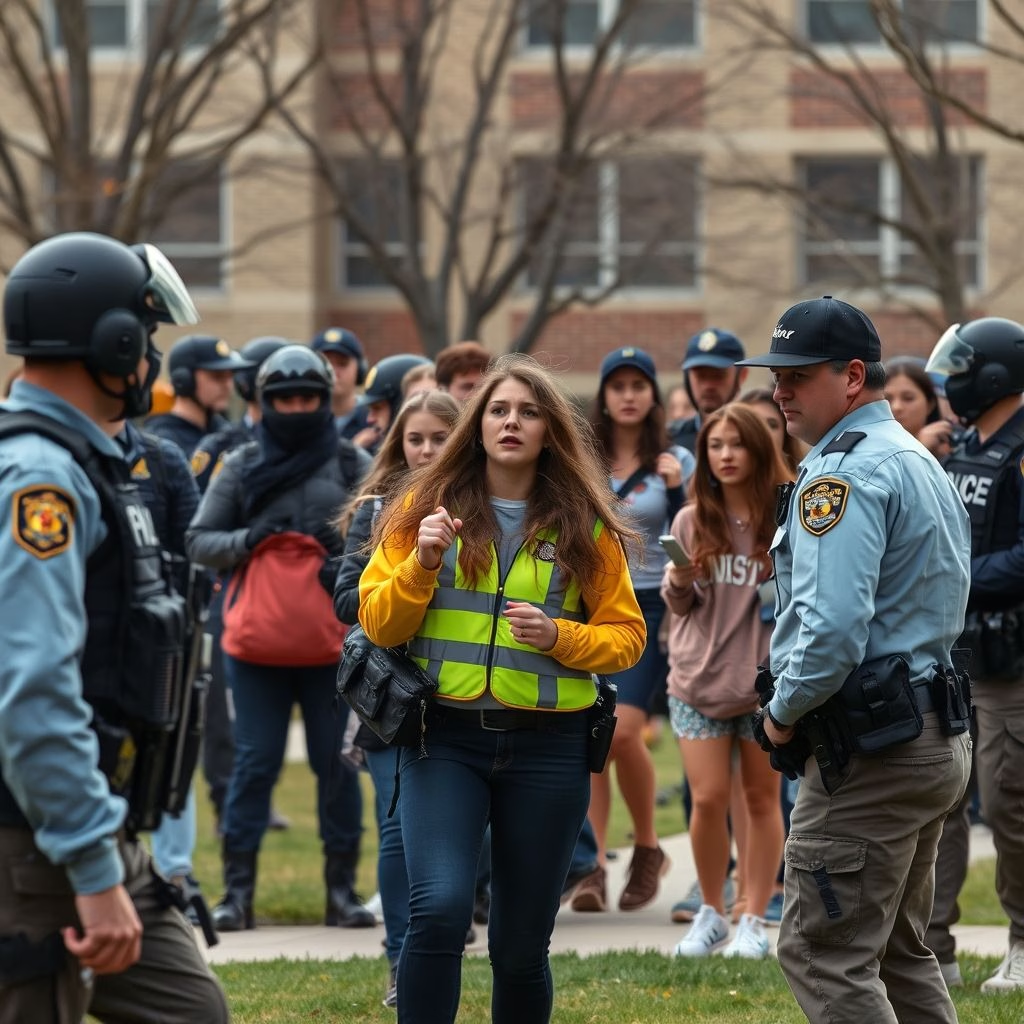The Rising Threat of Swatting: Panic and Chaos on Campus

The Rising Threat of Swatting: Panic and Chaos on Campus
In recent weeks, a disturbing trend has gripped several U.S. universities, leaving students, faculty, and law enforcement on edge. The incidents, known as “swatting,” involve the act of making false reports of serious crimes, often with the goal of eliciting a large and heavily armed law enforcement response. These active shooter hoaxes, designed to create maximum panic, are becoming increasingly common, and the impact is far-reaching.
One of the hardest-hit institutions is Villanova University, which experienced two separate active shooter alerts within a single week. The fear and chaos these hoaxes inflict are difficult to overstate. Students and staff are forced into lockdown, emergency responders are deployed, and the entire campus community is thrown into a state of high alert, fearing for their lives.
The problem isn’t isolated to Villanova. The University of South Carolina and the University of Tennessee at Chattanooga have also found themselves targets of these swatting incidents. The prevalence of such attacks is a growing concern, highlighting the urgent need for preventative measures and effective responses.
A Surge in Incidents
The rise in swatting incidents is alarming. Statistics show a significant increase in recent years. While reliable figures vary depending on the source and reporting methods, the trend is undeniable. The number of reported incidents has jumped dramatically since 2011, and experts anticipate that the overall number of occurrences continues to rise.
This surge is fueled by several factors, including the ease with which false reports can be made, the anonymity afforded by the internet, and the potential for causing significant disruption. The perpetrators often seek to create chaos, disrupt activities, or simply gain notoriety by causing panic and fear.
The FBI Responds
The FBI is well aware of the growing problem of swatting and has taken steps to address it. Recognizing the seriousness of these threats, the Bureau has established a dedicated database to assist law enforcement agencies across the country. This database is designed to help track and analyze swatting incidents, allowing for better coordination, response, and potentially, the identification of perpetrators.
The FBI’s involvement underscores the severity of the issue. Swatting incidents are not just pranks; they are serious crimes that divert crucial resources away from legitimate emergencies and expose individuals and communities to unnecessary risk. The emotional toll on those affected, from students and faculty to first responders, is immense.
The Impact and Consequences
The consequences of swatting are wide-ranging and devastating. Beyond the immediate panic and fear, these incidents can lead to significant disruption of daily life. Classes are cancelled, events are postponed, and the normal flow of university operations is brought to a standstill. The psychological impact on individuals is also considerable. Students and staff may experience heightened anxiety, fear, and a sense of vulnerability.
Law enforcement agencies are also burdened by these hoaxes. Resources are diverted away from legitimate emergencies, and officers are put in harm’s way responding to false alarms. The potential for real violence during these responses, when officers are on high alert and facing uncertain situations, is a serious concern.
While the perpetrators may be motivated by a desire for notoriety or a misguided sense of humor, their actions have real-world consequences. Law enforcement must investigate each incident, which demands time, manpower, and financial resources. The potential for serious harm to innocent individuals is ever-present, and the psychological damage sustained by those targeted by these hoaxes can be long-lasting.
Looking Ahead
As swatting incidents continue to plague campuses and communities, it’s crucial to increase awareness, reinforce preventative measures, and seek out effective strategies to combat the practice. The combined efforts of law enforcement, educational institutions, and the public are essential to mitigate this growing threat.
The growing frequency of such incidents highlights the need for a multi-faceted approach to this problem. Stricter penalties for perpetrators, increased security measures at potential targets, and the education of students and staff about the risks and proper response protocols are essential components of any effective plan.
The attacks on Villanova University and University of South Carolina emphasize the need for proactive responses. The hope is that the combined efforts of federal agencies and the institutions themselves will lead to the successful curtailing of these dangerous hoax attacks.
Sources and Further Reading
For more information, please see the following resources:
https://www.usatoday.com/story/news/nation/2025/08/22/villanova-active-shooter-hoax-swatting-mass-panic/85768500007/
https://www.politifact.com/article/2025/aug/22/swatting-villanova-university/
https://www.yahoo.com/news/articles/swatting-active-shooter-usc-villanova-144549191.html




